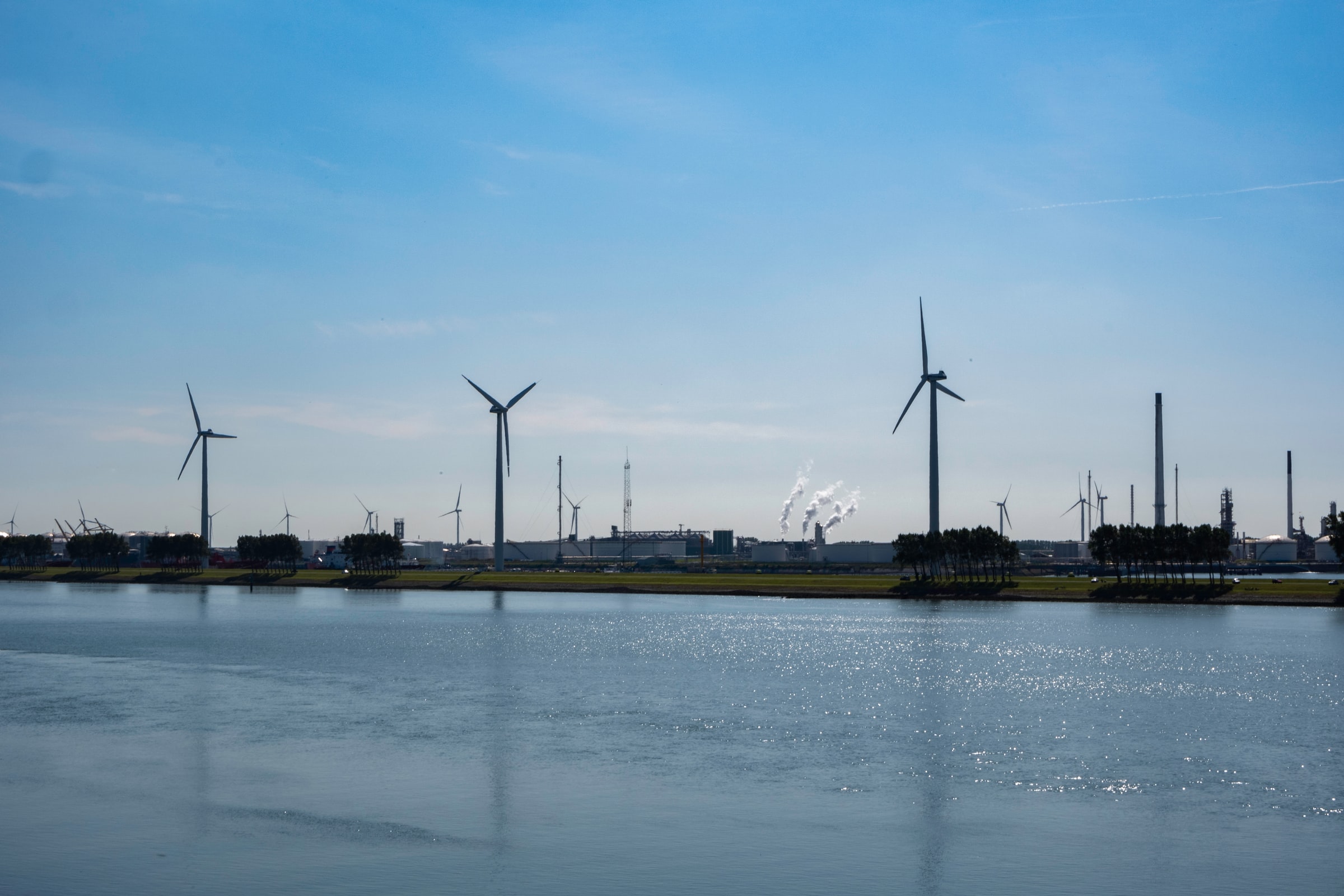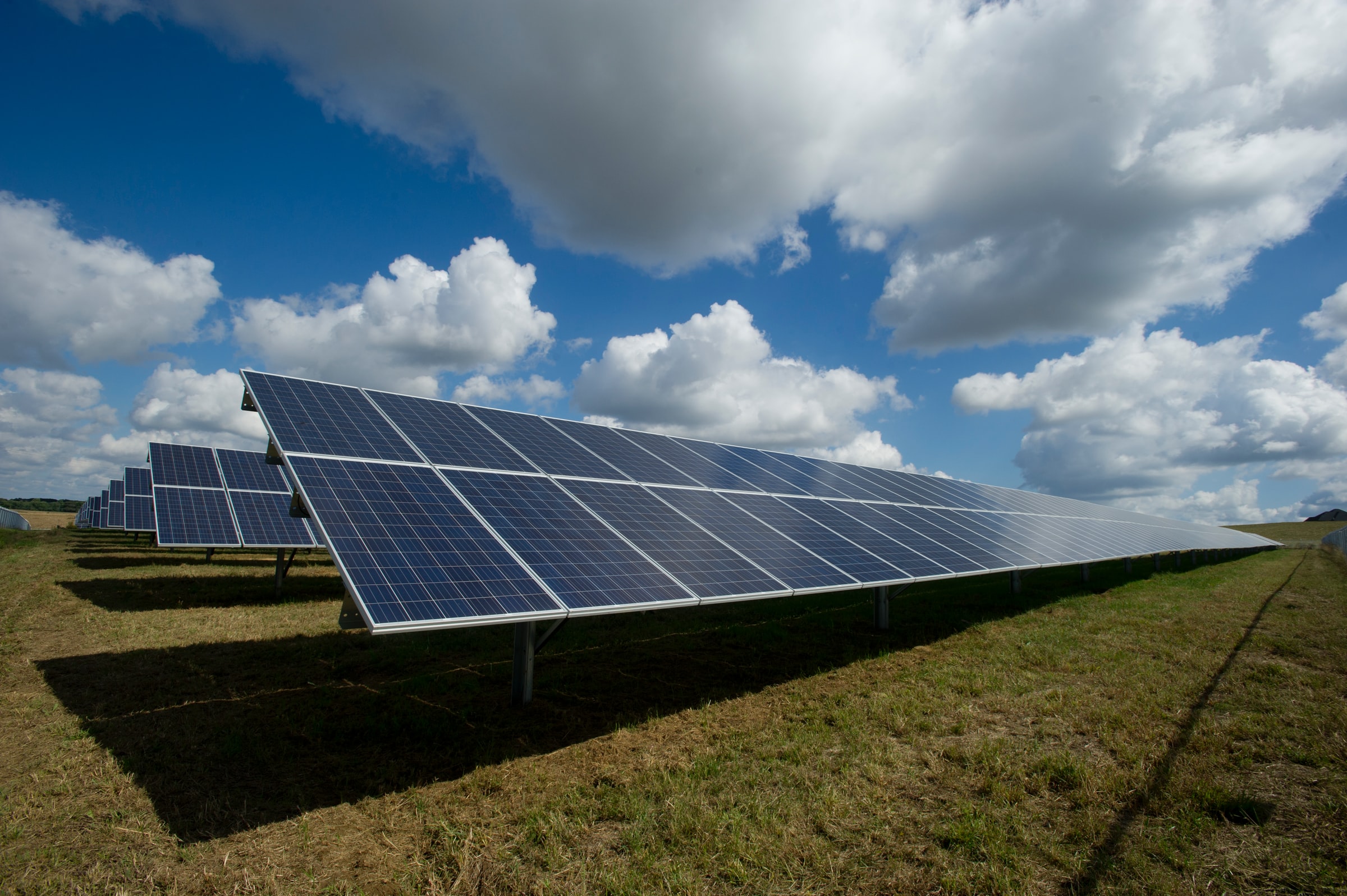
Hydrogen plays a decisive role in the energy transition towards a 100% green economy.© Anant Chandra -unsplash.
In 1875, in his popular novel The misterious island, Jules Verne wrote:
– And what will be burnt instead of coal?
– Water! -replied Cyrus Smith.
Yes, my friends, I believe water will one day be used as fuel, as the hydrogen and oxygen that make it up, used separately and simultaneously, will produce an endless source of heat and light, with much greater intensity than that of coal. One day, instead of coal, the steamers and locomotive tenders will be loaded with these two compressed gases, which will burn in furnaces with enormous heating power. There is nothing to fear, as so long this Earth is inhabited, it will provide elements to meet the needs of its inhabitants, who will never lack light or heat, nor the produce of the vegetable, mineral and animal kingdoms. I believe that, once the coal fields are depleted, heat will be produced with water. Water is the coal of the future.
Almost 150 years later, the prophecy of the visionary novelist is being somewhat confirmed. The reaction of hydrogen (H2) and oxygen (O2) to create water (H2O) is a source of clean electricity whose application is growing by the day. What Verne did not anticipate is that the reverse water decomposition process would be the cleanest way to obtain hydrogen itself. A full cycle that starts and ends in water and that, as we will see, is an important asset for achieving greenhouse gas (GHG) reduction targets, the cornerstone of the fight against global warming.
A hidden and volatile source of energy

Green hydrogen is proposed as a complementary energy store for renewable, ideal for achieving “zero emissions” processes. © Casey Horner-unsplash.
Hydrogen is a colorless and odorless gas that constitutes the most abundant element in the universe. 75% of visible matter is hydrogen, but on Earth it is difficult to find in its molecular formula – H2 – as it is extremely light and volatile, easily escaping Earth’s gravity and dispersing into interplanetary space. However, as a compound, it is present in incalculable amounts in hydrocarbons and, above all, in water, where the chemist Antoine Lavoisier first identified it, naming it “hydrogen” from the Latin term hydrogenium, “water generator”. Lavoisier stated the best known and most vital chemical formula: H2O. Today, the energy generated in this combination with oxygen gives hydrogen a key role in energy transition towards a 100% green economy. We will see why.
First of all, it is necessary to revise the three types of hydrogen existing in our economic system based on the sustainability of the method used to obtain it:
- Grey hydrogen. It is obtained from hydrocarbon in the refineries themselves or from coal. It is the traditional method used so far in many industrial processes and generates GHG, that is why it is not sustainable, being one of the objectives to reduce or eliminate in the fight against global warming.
- Blue hydrogen. It is obtained from methane (CH4). It is also called “low-carbon” as its production is based on technologies that capture and store the CO2 generated during the process as waste. It is considered a useful source of energy for energy transition towards “zero emissions”.
- Green hydrogen. As already mentioned, hydrogen can be obtained through the electrolysis of water, by applying electricity to an anode and a cathode, a common experiment in science class. If the applied electricity comes from renewable sources, we then obtain a process that is 100% clean and this hydrogen is therefore called “green”.

Grey hydrogen is obtained by many industrial processes and generates greenhouse gases.© Veeterzy-unsplash.
Why is it a source of energy?
The energy provided by hydrogen is a consequence of its reaction to oxygen. This reaction can take place in two ways. The first one is a combustion similar to that of fossil fuels, but unlike them, the only waste obtained during the process is water. For instance, this combustion reaction has been used by NASA on trips to the Moon to propel the different rockets that placed astronauts in orbit and launched them towards the satellite.
The second way of obtaining energy from the reaction between hydrogen and oxygen is triggered in the so-called “fuel cell”, a device in which electricity is obtained, having only water as waste. That is, the reverse process of electrolysis. Therefore, if we use green hydrogen to react with oxygen in a fuel cell, we obtain a totally clean energy generation method.
The history of the fuel cell dates back to 1843, when the Welsh physical scientist and judge Sir William Grove published a study on gas voltaic batteries, which was probably what inspired Jules Verne to write the speech of the engineer Cyrus Smith.
The fuel cell also became famous in astronautics as a source of electricity in space travel. In these cases, the resulting water was used by astronauts to drink and cool the systems of the spacecraft.
A very valuable storage unit for solar and wind energy

When solar panels and windmills produce more energy than it is demanded, instead of stopping production, electricity can be derived to produce hydrogen by electrolysis. © American Public Power Association-unsplash.
But perhaps the greatest value of hydrogen lies in its capacity to become a storage unit for energy. Hydrogen can be stored in a gas or liquid state and be distributed through tanks or even pipelines. This makes it especially valuable as a complement to renewable energies, solar and wind energy in particular, to achieve zero emission processes.
The problem with these energies is that their generation depends on meteorological and astronomical variables. Based on the existence of wind and its speed, windmills generate more or less energy or do not turn at all. If it is cloudy or there is dust in the air, solar panels generate less electricity and none at all at night. This is why these renewable energies have an intermittent performance and often cannot meet the demand. In other words, in economic terms, production-consumption indivisibility occurs: the energy sources cannot guarantee a certain production at a certain time, consumption is only possible when the energy is being generated.
Therefore, how to store renewable energy in order to have it available when it is not being produced, is one of the main technological objectives of recent years. The design and manufacturing of lithium-ion batteries – the current storage system – has greatly evolved, but their cost, carbon and water footprint and obsolescence over time mean that the solution has not been solved from an environmental perspective.
And here is where hydrogen steps in. When solar panels and windmills produce more energy than it is demanded, instead of stopping production, electricity can be derived to produce hydrogen by electrolysis, in the so called “electrolyzers”. This hydrogen, conveniently stored, can be converted back into electricity in fuel cells when needed. And this is what makes hydrogen so valuable as a possible complement to solar and wind energies.
The path towards profitability
This system has not been fully developed yet and it generates doubts based on its economic profitability. According to the International Energy Agency, last December the production cost of green hydrogen was around 3.5 – 5 €/kg. As every kilogram contains around 33.3 kWh, this results in 0.10 €/kWh – 0.15 €/kWh of energy. However, most experts nowadays estimate that in the next 10 years the production costs of green hydrogen will decrease by 70% or even more, if the prices of electricity from renewable sources continue decreasing, as expected.
According to a study by the University of Stanford and the Technical University of Munich, the production of green hydrogen would be clearly profitable if the entire excess of renewable energy that is not consumed could be stored. In this sense, the generation of hydrogen would represent the regulating element of the balance in the price of the electric market. If the production of renewable energy was high, the minimum market price would be indicated by the value at which it would be more profitable to use electricity to produce hydrogen. A fall in the price would lead to an increase in hydrogen production, which would lead to an increase in demand and thus balance the market.
A key factor for the planet

Hydrogen for the automotive industry could be distributed in stations like the current gas stations or even be produced at home by the users. © Toshihiro Gamo.
Nowadays, the use of blue hydrogen is seen as a suitable vehicle in the energy transition of the industrialized world towards energy neutrality, as it is supported by much of the governance that provides incentives for its development. But in order to reach the zero emissions target, the use of green hydrogen must become widespread and move forward to become the fuel of the future. The transport sector is probably the area where hydrogen has a more attractive field of application, based on the already existing hydrogen fuel cell electric vehicles (FCEV). Hydrogen for the automotive industry could be distributed in stations like the current gas stations or even be produced at home by the users, as already proposed by some car manufacturers and envisioned in several projects supported by the European Union.
With the generation of hydrogen and its energy use, the water-energy link reaches a new dimension: water generates hydrogen and at the same time results from the energy obtained with it. A generous trait of its molecular nature that opens up hopeful prospects for a sustainable planet.





